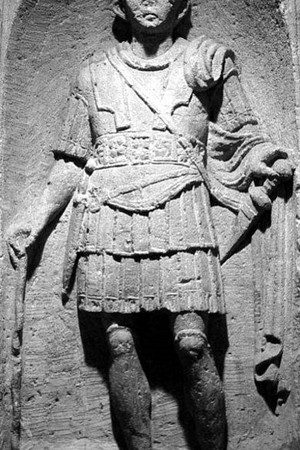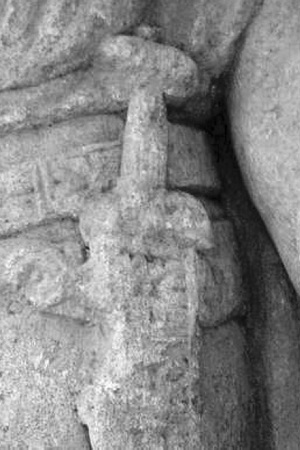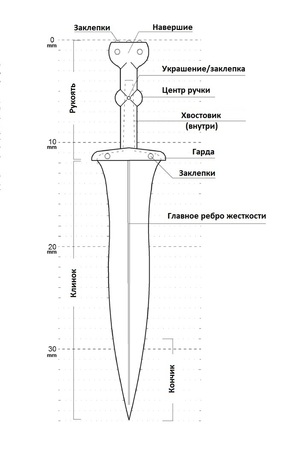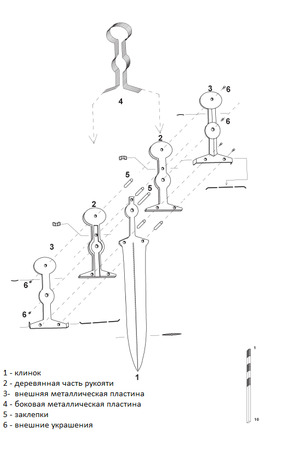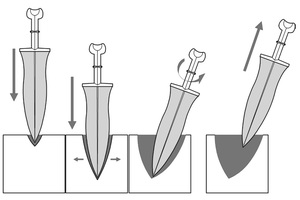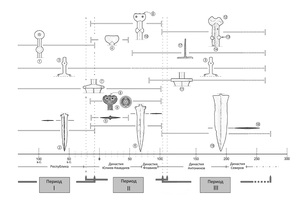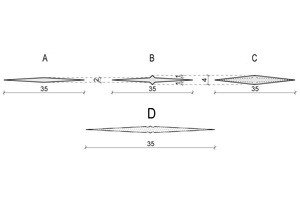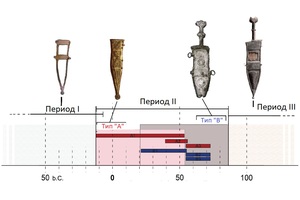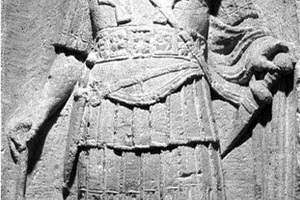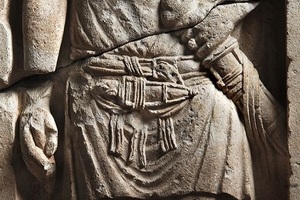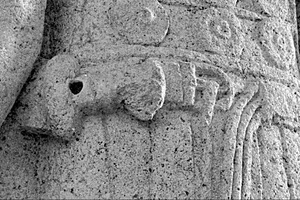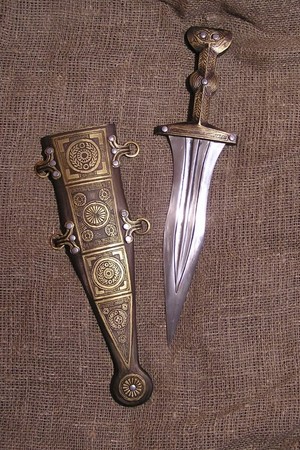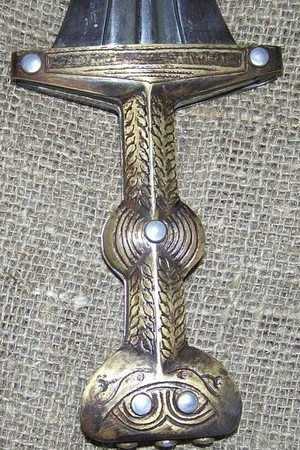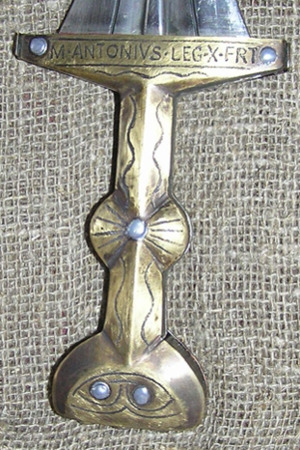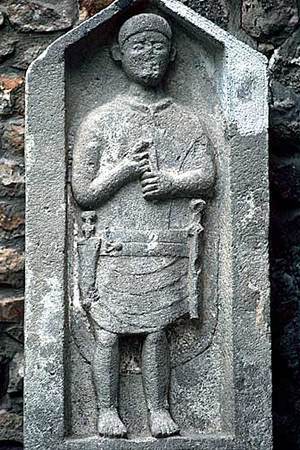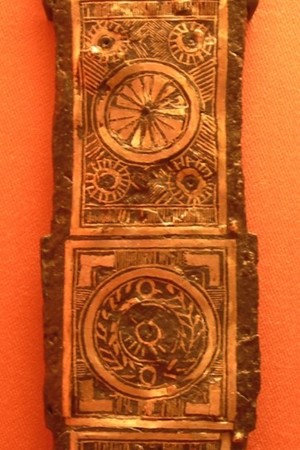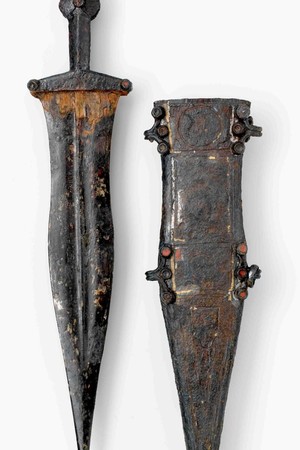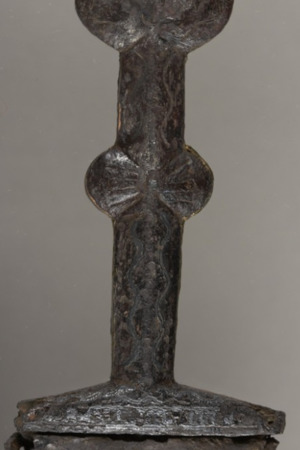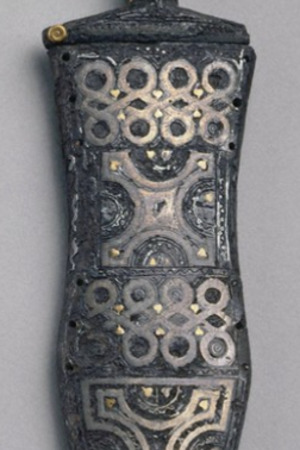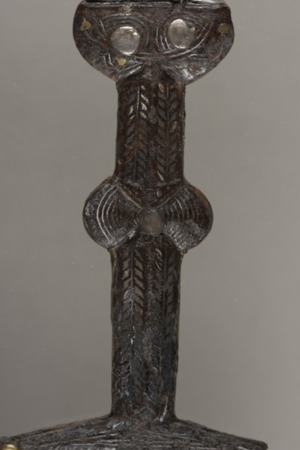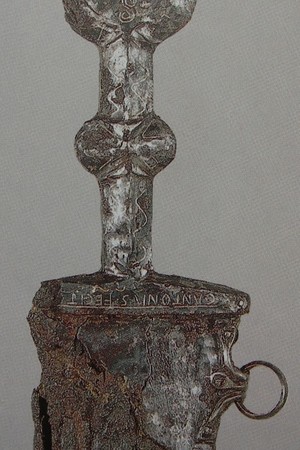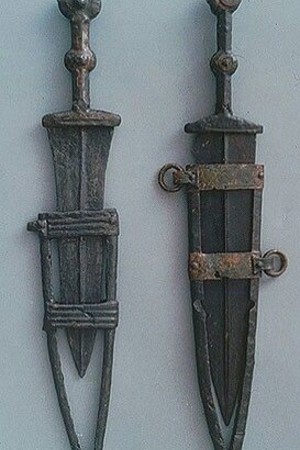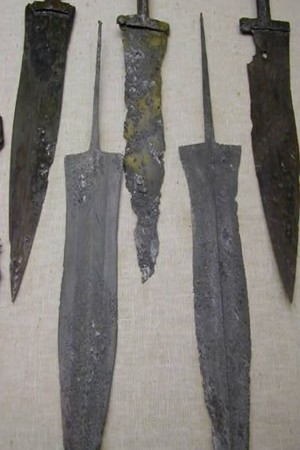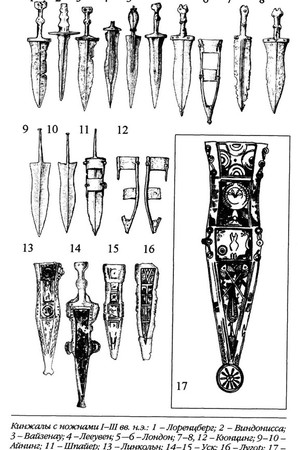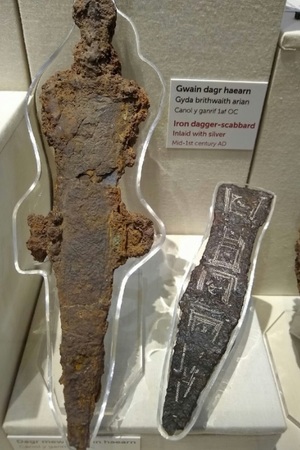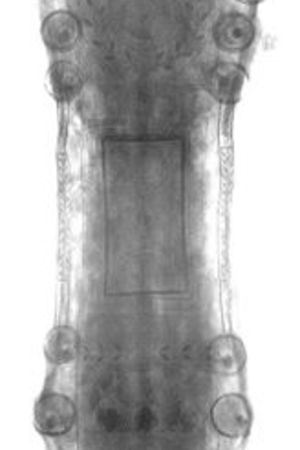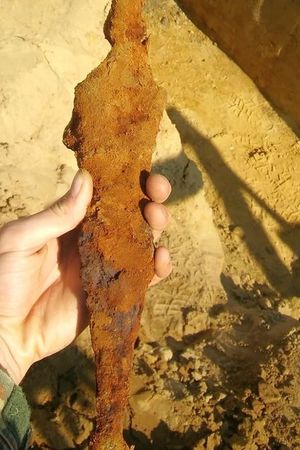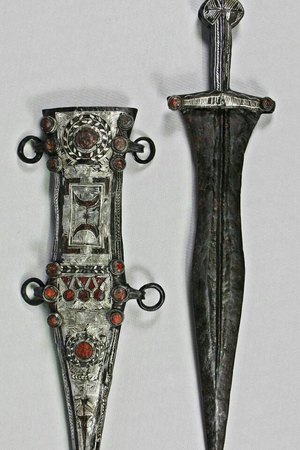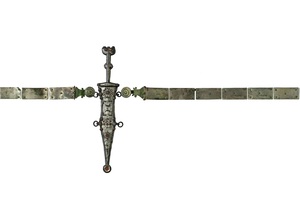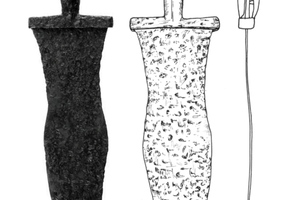Pugio
Pugio (Latin: pugio) is an ancient roman double-edged dagger. It was used as a backup weapon by legionnaires, auxiliaries, and also by the junior commanding staff of the roman army (centurions, optio, vexillarii, etc.).
Some of the first mentions of the pugio appearing among legionnaires date back to the 1st century BC, although it is assumed that they existed even earlier. By the beginning of the Principate era, the pugio had become widely spread among legionnaires and auxiliaries.
Judging by visual sources, a similar dagger was used by gladiators, but the question of whether their weapon can be classified as a pugio remains unresolved.
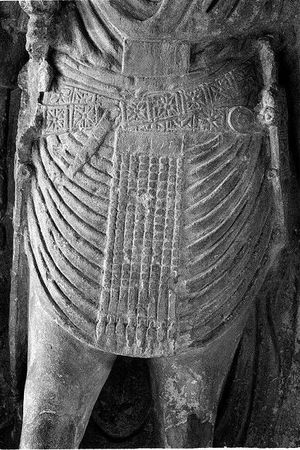 Part of a stele to Annaius Daverzus with Pugio, an auxiliary from cohors IIII Delmatarum. Early 1st century AD
Part of a stele to Annaius Daverzus with Pugio, an auxiliary from cohors IIII Delmatarum. Early 1st century ADFunction
In hand-to-hand combat, the main weapon of the legionnaire was the gladius. However, in case of breaking/losing the main weapon or in excessively close combat, when it is necessary to inflict a quick and deadly blow without a swing, the alternative weapon - the pugio - came to the rescue. In the tightness of hand-to-hand combat, the pugio allowed to inflict effective blows without a swing. An additional advantage was the ability to hold this dagger not only with a straight, but also with a reverse grip, which allowed to inflict stabbing blows from above. However, most likely, the pugio was more often used for household purposes (food preparation, household work in the camp, and so on).
The pugio had a steel double-edged blade 15-35 cm long and usually had a leaf-shaped form. The handle design had an unusual T-shape, which in cross-section had a layered structure. Often, especially in the 1st century AD, the handle was richly decorated with gold and/or silver inlay, even for ordinary legionnaires. Sometimes the handles were named. To strengthen the blade, the main ridge of rigidity was located in the middle.
Despite the fact that the pugio had the status of more of a backup weapon, it would be wrong to assume that it had poor striking power. Researchers suggest that inflicting a blow both with a straight and a reverse grip from above, followed by a turn of the blade, was almost always fatal for the victim. Below is a diagram of such a blow, which should dispel any doubts about the pugio's ability to inflict extremely serious wounds.
Typification
According to the classic classification, pugios are usually divided into 3 groups by periods, which are called - Type I, II and III, and 4 groups by the type of blade (A,B,C,D), the cross-sections of which are shown in the figure below.
Type I represents the earliest, Republican type, and dates back to the 1st century BC. These are the simplest examples in structure, sharpened more for functionality than for extravagance. The type II corresponds to the most richly decorated ones and dates back to the beginning of the Principate era - the 1st century AD. Type III is the last existing type of pugio. After the peak of the expensive customization of Type II, more "modest" samples among the finds are observed, although they are still more decorated than the Republican ones. They are dated to the 2nd-3rd century AD.
Way of carrying
In addition to the huge variety in both the pugios themselves and their scabbards, there were also various options for carrying them. Most often, they were clung to two upper or lower rings located on the scabbard (the most common according to finds is the presence of 4 rings at once, apparently for different types of wearing). The scabbard, in turn, was placed on cingulum with the help of special fasteners. Also, in order to keep the pugio higher relative to the cingulum, it could be attached to the lower rings. If there were two cingulums, then pugio was often attached to one, and gladius to the second. But there were other ways of wearing it, which, apparently, were primarily characteristic of higher military ranks - centurions. An example is wearing the pugio as a gladius-on a separate strap slung over the shoulder, or tying the pugio with separate ropes to the center of the cingulum in a horizontal position. There is also one atypical wearing of the pugio in aquilifer-in a horizontal position on the side. Most likely, the pugio is suspended by 2 rings on one side, but there is a possibility of stylization by ancient artists, and the dagger was worn on one lower and one upper ring.
Reenactment
All pugios of Type II are remarkably suitable for the variation of a legionnaire or auxiliary of the second half of the 1st century. Individual pugios of Type II-B may fit the very beginning of the 2nd century, however, for the image of a legionnaire of the first quarter of the 2nd century, it is still better to use a pugio of Type III. Titled fighters like centurions or representatives of the standard group can also use this type of equipment. Gladiators, traditionally armed with short cold weapons (provocators, dimacheri, retiarii), can also use pugios. The photo below serves as an example of the stylization of a pugio from Carnuntum. Only its scabbard was found, or rather fragments of it. The missing elements are recreated according to the closest analogs of pugios of the same dating and type. The pugio from the Art – Princeton Museum, 1st century AD, was used as the dagger itself.
Literature
PUGIO - GLADIUS BREVIS EST, Marco Saliola, Fabrizio Casprini, 2012
Die Legionen des Augustus, Dr. Marcus Junkelmann, 2015
Die romische Armee: Von Augustus zu Konstantin d. Gr. (German Edition) by Yann Le Bohec, 1993
Galena Radoslavova Georgi Dzanev Nikolay Nikolov. The Battle at Abritus in AD 251. Written Sources Archaeological and Numisma
Ian R. Scott. First century military daggers and the manufacture and supply of weapons for the Roman army. Reprinted from "The production and distribution of Roman military equipment". Proceedings of the Second Roman military equipment research seminar. Edited by M.C. Bishop. BAR International series 275, 1985.
Related topics
Gladius, Cingulum, Legionnaire, Auxiliaries, Centurion, Vexillary, Option, Principate

 Gallery
Gallery






